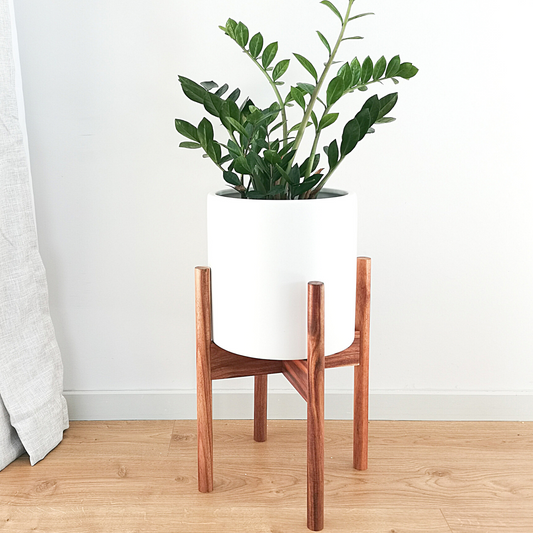Snake plants have become a household favorite for plant lovers. It’s versatile with light requirements, making it a perfect plant choice for apartment dwellers.

About Snake Plants
Snake plants, also known as Mother-in-law’s tongue or Sansevieria, are native to tropical Africa and Southern Asia. And because of this known fact, this plant survives in either low or high light levels.
This plant is also one of the top picks as a room decor. With its sword-like leaves that grow about two feet long and shades of dark and light green with subtle yellow foliage, this lovely plant can brighten up any room.
You can place them basically anywhere. If you decide to put this plant inside your room, you can take advantage of its benefits. Snake plants are known to have air-purifying capabilities, and they absorb toxins and help fight allergies and sick building syndrome.
The snake plants are considered as one of the hard-to-kill plants. They don’t really require too much care from their owner, but a little lovin’ for them every now and then won’t hurt. While they can thrive with little to no supervision, it’s still essential for snake plants to receive proper care and attention. After all, they bring joy and health benefits to our lives, so why not make them happy?
We’ve listed everything you need to know about snake plants care in this article.
Snake Plant Care Tip

Place your snake plant in bright, indirect light. Snake plants can indeed thrive in either bright light or shady parts. But if you want the best for your plant, it’s better to put them in a location where they receive indirect sunlight.
Putting them in places where they get too much direct sunlight can cause leaf burns, so be careful when placing them near large windows.

Don’t overwater your snake plants. Were you worried about forgetting to water your snake plants? This shouldn’t be a problem at all! Snake plants can survive as long as six weeks without any water.
Overwatering your snake plants can lead to root rot, which is a common issue that snake plants encounter. Root rot usually occur if you drench your snake plants with too much water during winter.
If you’re unsure how to tell if your snake plant already needs watering, you can check its soil condition. Check the soil all the way down the pot, and once you see that the soil has been completely dried, that’s when it’s safe to water them.

Use a cactus and succulent mix for the soil. Snake plants aren’t really demanding when it comes to what type of soil they’re planted in–any fresh and sterile soil mixture is perfect for growing this amazing plant.
But because we want the best for your plant, it’s suggested to have succulent and cactus soil mix for your snake plant. This mixture can retain water for a longer time, which is advantageous in leaving the plant with no water for a few weeks. You can also add coarse sand, crushed granite, and pebbles to improve water drainage.
It’s also advisable to use terracotta pots for your snake plants since these allow excess moisture released from the soil and absorb water more quickly.
Keep your snake plant at a warm temperature. Since snake plants are native to tropical countries, they flourish more in warm spaces. It's recommended having a range of 70 to 90 degrees Fahrenheit make your snake plants happy.
This is also an important reminder to keep this recommended temperature during cold months. Snake plants might perish if the temperature isn’t regulated during colder months.

Make light use of fertilizer. It’s not really necessary to feed your snake plants with fertilizer since they can grow and thrive even in nutrient-poor rocky soil. But if you prefer to fertilize your snake plant, a 10-10-10 fertilizer ratio is suggested. Just also make sure to feed them during summer or spring and never during winter.
Prune your snake plant when it’s growing season. Snake plants grow faster during spring, and this is the best time to prune them. Make sure to use a germ-free and sharp pair of scissors or knife for cutting a dry leaf. Just minimize the pruning sessions since it can lead to a stressed snake plant.
Floral photo created by rawpixel.com - www.freepik.com
Keep your snake plant healthy to ward off pests. To avoid insects and pests invasion, it’s best to keep your snake plant healthy. You can achieve this by making sure that the water, air, and temperature are properly circulated. If there’s a pest or insect insight, you can pick them off of your plant or slightly spray them water or organic oils.
It’s also recommended that you gently wipe off the dust build-up in the leaves to keep its green luscious and shiny foliage.
Know Your Snake Plant
Snake plants come in various types, but the tips and guides we’ve shared above are applicable to almost any of them. To give you an idea of what type and look of snake plant that you want (or you already have!), here are some of the common and popular types of snake plants:
Sansevieria trifasciata, “Mother-in-law’s Tongue”
This is the most common and popular type of snake plant. It typically grows about three feet in length and 2.5 inches in width. Perfect for landscaping or just an accent plant.
Sansevieria gracilis
A thin and petite variant of snake plant that usually grows 18 inches in height.
Sansevieria masoniana, “Mason Congo”
Also known as “whale’s fin,” this type of snake plant has wider white-spotted leaves than the usual ones.
Sansevieria bacularis
This snake plant has cylindrical and narrow leaf grows upward and can reach up to 1.7 meters.
Sansevieria Trifasciata, “Golden Hahnii”
This type of snake plant is a dwarf variant and characterized by a rosette form. The golden yellow edges in its leaves make it a unique addition to any coffee table.
Ready to grow your snake plant? We hope that our foolproof tips and guides help you care for your snake plant! Let us know in the comments which tip worked the best for you!














